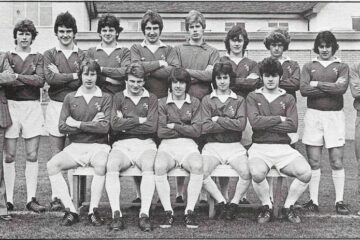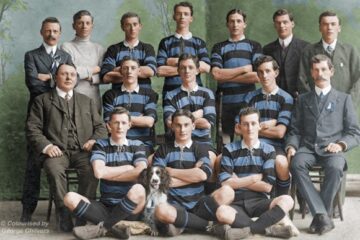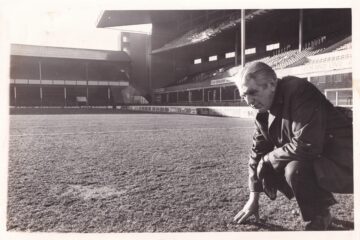During the 1881-82 season, Everton were faced with a number of injuries to players and selectors were forced to cast their net wider in order to strengthen the team for an away fixture against Northwich Victoria. This process led them to enlist the help of Frederick G Heaton.
Heaton was born in 1858, near the Staffordshire town of Leek, where his father Edwin was a land agent. Frederick, was the fifth child born to his wife Elizabeth, and were shown on the 1861 census living at Basford Villa, Chaddesden. Frederick first appeared playing football, under the rules of Staffordshire FA, at Lichfield in 1879. Around this time, he moved to Liverpool, where he became a cotton dealer taking rooms in a property owned by a Mrs Hale at 168 Bedford Street.
Frederick Heaton was almost certainly acquainted with an experienced footballer called Robert E Lythgoe, who was a committee member of the North Wales FA. Now residing in Wirral, he was the architect behind the formation of the Birkenhead Football Association in 1879. Heaton was in the side when they faced Everton at home early in 1880. The match took place on the field next to the church of St Anne, located on Beckwith Street, where the two unopposed goals both scored by Heaton, won the game. The next season, along with Bob Lythgoe, he transferred his services to Bootle and was made club captain.
The Bootle club, due to the influence of their former university players, were the leading exponents of the association game on Merseyside. Their ranks also included Robert M Sloane, who had previously played football in his native Glasgow. Bob Lythgoe, who had taken over the secretarial duties, entered the club for the FA knockout and they were granted a home tie with Blackburn Law Society. Bootle won the game 2-1 but were beaten in the next round, 4-0 at Turton.
It was now obvious that the standard of football played on Merseyside was lagging behind other areas of Britain, so the Bootle club arranged for a visit from Queens Park, who agreed to send their Second XI. They hoped that the Scots would demonstrate the finer aspects of the association game and thus encourage its development on Merseyside. Fred Heaton, in the meantime, made an appearance for Everton.
The game with Northwich Victoria took place on New Year’s Eve 1881 at the Drill Field in front of a good number of spectators. The place of George Badgery in goal had been taken by a previously unknown player called Richardson, while Mike Higgins had been moved forward to allow Fred Heaton in to the half-back line. Earlier in the season, the Cheshire FA Cup holders had been surprisingly beaten 2-0 by Everton on Stanley Park and were out for revenge. They pressed the visitors from the start and led 4-1 at the break. The home side continued to dominate in the second half and this caused a journalist to make the following comment:
They proved themselves superior to the Evertonians (‘alias’ Liverpool Invincible Black Watch) who, not withstanding the assistance they received from FG Heaton, the well-known Bootle half back, had to submit to a 6-2 defeat. (Athletic News).
Fred Heaton, none the worse for his ordeal, now awaited the arrival of the Glaswegians.
The game with Queens Park took place 21 January 1882 on the local cricket ground where a playing area had been temporarily enclosed by sheets of canvas to allow an entrance fee to be charged. Bootle strengthened their side by including Tom Evans of Everton while Fred Heaton handed over the captaincy to local Oxonian, Fred Henstock. Around 1,000 spectators attended the game that was won 2-0 by the Scots.
The enclosure was still in place the next Saturday, when the visit of Everton attracted 600 people, who watched Jack McGill score all the goals in a 4-1 defeat for Bootle. The following season, Fred Heaton left the club to become a founder member of Liverpool Ramblers, where he played out the remainder of his career.
The 1891 census records his return to Staffordshire, where he was assisting the family firm of land agents. They were living at Endon which is described as being ‘a pleasant village and township on the road between Leek and Stoke.’ (Kelly’s Index.)
Fred Heaton had become the captain of Leek Cricket Club and was selected to play on several occasions for Staffordshire. On 31 July 1891, he married Amy Meakin at the parish church of St Luke and the couple settled in Endon at a house named The Grange. Their only child, Edwin, was born there two years later.
Frederick Heaton continued with the family business, and conducted the affairs of such famous people as race horse owner Sir George Chetwynd. In December 1903, while visiting Lichfield, he was involved in carriage accident which badly damaged his left leg. His injury gradually deteriorated until, following the onset of gangrene, Frederick Heaton died on 17 August 1904, and was buried in the village churchyard at Endon. He was just forty-six years old.



